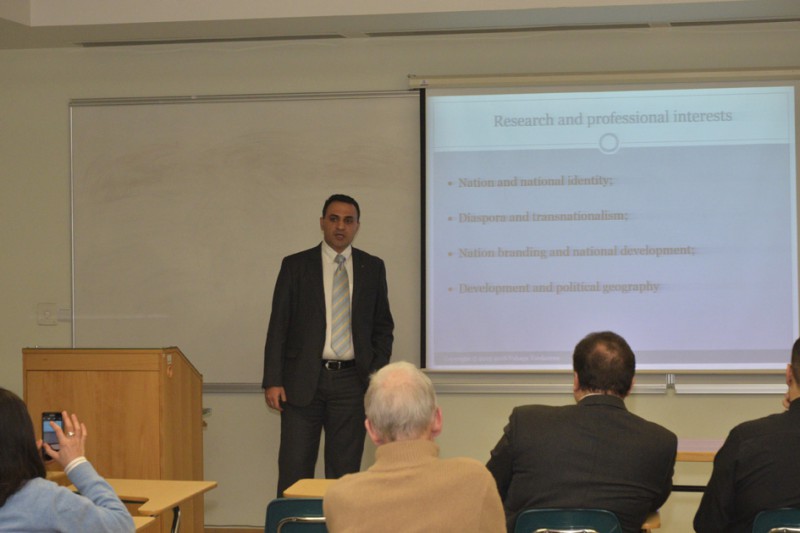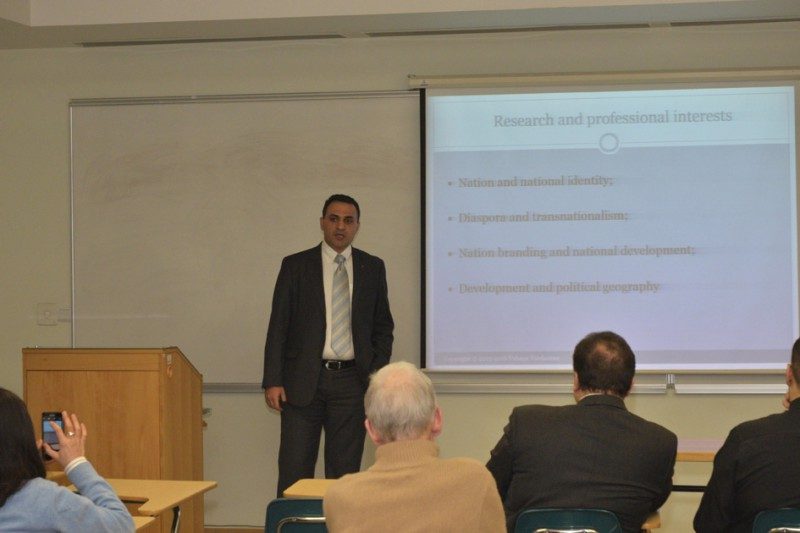
Alumni Stories: Giving back to Armenia
4 min readAUA graduate Vahagn Vardanyan arrived in Armenia to meet and greet AUA students. His doctoral research on the Australian-Armenian community makes a rich contribution to academic scholarship on Armenian diasporan communities. Vahagn, a native of Yerevan and who currently serves as Head of High School and the Coordinator of the International Baccalaureate Diploma Program (IBDP) at Hillside World Academy in Singapore, says understanding diasporan communities helps us, in turn, to understand the mechanisms for understanding the concept of ‘diaspora return’ and for reversing the trend of emigration from Armenia.
In the light of the growing demographic crisis in Armenia and the recent Azeri aggression, Vahagn’s doctoral research provides a starting point for understanding a range of issues around the mass exodus of Armenians from the homeland and diasporan communities concerns.
Vahagn explained how the American-style graduate education he received at AUA and in the US introduced him to “the whole culture of study” of US academia, providing him a platform in understanding issues of multiculturalism and ethnic diversity. The inter-disciplinary American approach of collaborating on group projects, real-life learning opportunities, academic freedom, and open discussions with professors helped him develop a broad, multifaceted skill set.
An opportunity for an Edmund S. Muskie/FSA Graduate Fellowship took Vahagn to Missouri State University to complete a second Masters Degree. Studying Chinese as an elective during his time at the university also opened many opportunities for Vahagn, and, he was ready to make his next move. Returning to Armenia, he continued working at the Yerevan-based Armenian Development Bank and as a visiting lecturer for the Yerevan State Financial-Banking College of the Central Bank, between 2002-2005. He also progressed his studies in learning Chinese during his time in Armenia, eventually finding himself in Beijing in late 2005. Vahagn’s knowledge of Chinese and his desire to explore the world landed him at the biggest International Baccalaureate (IB) school in China as an economics teacher, eventually working his way up to the role of senior administrator at the school’s sister branch in Singapore, where he is currently based.
While still maintaining his interest in economics and finance, Vahagn has shifted his interests to questions of national identity and continued to research this field through his doctoral thesis in Political Geography at the National University of Singapore. Vahagn explains that his choice of the field was shaped by his eclectic background and experiences, offering the most suitable home for an interdisciplinary study of diaspora and national identity.
A number of academic definitions of the term diaspora disqualifies Vahagn from attaining a title of diasporan. His interest in diasporan issues lead him to begin visiting the diasporan communities in Sydney and Melbourne in Australia where he undertook research into sentiments of Armenians outside their homeland and their ideas of national identity. His research is based on and thus far comprised of 15, in-depth, one-and-a-half-hour-long interviews with diasporans, with the main topic “Inclusion of Diaspora in a Homeland Nation: Implications on National Identity of Diasporans.” Vahagn said: “The concept of returning to the homeland remains a fundamental feature of diasporan communities. He also says: “digging deep into Armenian diaspora communities ultimately gives us insight in understanding the reasons of emigration from Armenia and how to improve return to Armenia, a broader concept than just physical repatriation.”
According to Vahagn, the best way to encourage return to Armenia is for the Armenian government to implement consistent measures that encourage and strengthen a sense of belonging to Armenia. As his study discloses, diasporans rarely ask themselves where they belong.
“The most effective inclusion can be achieved through a place-centric approach, by making diasporans emotionally attached to specific places,” says Vahagn. Armenia should provide more than just an abstract space for its diasporans, but rather tangible places of connection. For the majority of our diasporans, the modern Republic is not a historical homeland. In other words, Armenia is a homeland, not the homeland. “It is seen essential to make Armenia the space for emotional attachment, and not just one limited to providing a cultural representation of Armenian heritage,” Vahagn said.
While diasporans need to gain ‘place knowledge’ about the homeland, Armenians in Armenia need to also learn about the Diaspora. This, in-turn, will develop trust and provide a deeper connection between the two separate but united groups.
Vahagn has maintained his connection with the AUA, with occasional meet and greets with students and lectures for the university. He travels to Armenia frequently: “I have been lucky with my opportunities, though Armenia will always be my homeland,” said Vahagn. He believes the overall standard of work ethic and skillset has significantly improved in Armenia since he graduated and that, in order to ensure the progress in Armenia’s work force, Alumni need to give back to their universities, regardless of their current residency status. Vahagn’s employment and educational experience is a model for students of the AUA, drawing on influences from diverse countries and experience from a wide range of jobs, bringing back broad and universal influences for new graduates in Armenia.
While Vahagn is clear that his own hard work contributed to his success, he also speaks of the unique opportunities given to him that helped him flourish – “an opportunity to study in the US and learning Chinese, and the chance to continue his education with a Doctorate in Singapore,” plus an American-style education at AUA. “AUA set the framework for my career and the frequent visits to Armenia and giving back to the AUA marks a gratifying part of my life’s journey” said Vahagn.
Vahagn’s story is a testimony to AUA’s success and bodes well for Armenia’s future.

